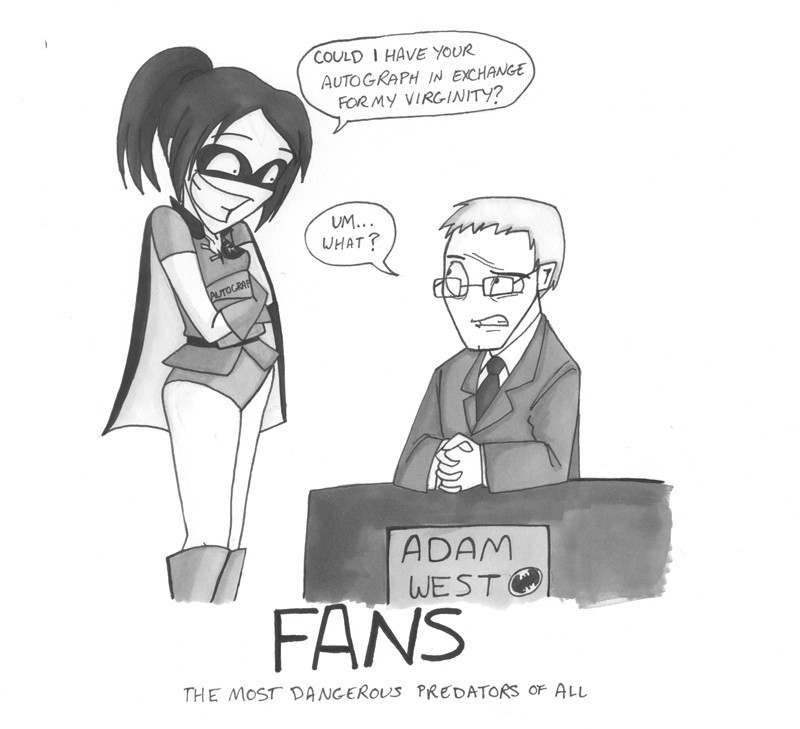Comics: Collecting, conventions and academics
No longer just for adolescents and collectors, comics have come a long way
Popular film adaptations of comics like Watchmen, Hellboy and the blockbuster run of Spider-Man, Batman and other superhero movies, are some of the most visible manifestations of comic books entering the mainstream consciousness.
Comics have a long history in popular culture, that extends from daily strips like Charles Schultz’s Peanuts to collectible superhero comics, to arty, adult-targeted graphic novels, and even into the University of Winnipeg’s classrooms. Hundreds of comic fans will flood the Winnipeg Convention Centre this weekend, Oct. 31-Nov.1, to celebrate that history at the fourth annual Central Canada Comic Convention.
“I probably started buying comics on a regular basis in 1991, at age 11. When I was 12, I got started with a reserve,” said Andrew Lodwick, a local comic collector. A reserve is a subscription-like service that comics stores offer, setting aside new titles every week or month for regular buyers.
Guy Dagui, the owner of Corydon Avenue comic book store Mighty Comics credits reserve lists for sustaining his business.
“The lifeblood of our store is subscribers,” Dagui said.
Collecting is no longer a pastime for lonely teens, either. As comics enthusiasts grow up, an interest in the medium doesn’t necessarily wane.
“I have over 200 subscribers, most in their middle twenties and up,” said Dagui.
“I was able to make it through 17 to 21 years old sustaining an interest in comics, now I’m a lifer. Though when you get a wife or a mortgage … I guess that’s another out,” said Lodwick.
Collectors and enthusiasts also have more options that cater to more mature interests. Smaller publishers like Montreal’s Drawn & Quarterly specialize in more narrative, art-based comic artists. Large publishers also provide for wider markets.
“Marvel and DC have every market covered. DC has a line of mystery, horror and spiritual,” said Dagui.
Comics have grown up so much that university academics have become interested in comics, organizing conferences and graduate studies around the unique visual media.
“[T]here is a strong drive to distinguish comics from other media by theorizing their aesthetic and formal qualities as a hybrid medium of words and pictures,” said Dr. Candida Rifkind, an associate professor in the English department at the University of Winnipeg.
Rifkind, like Lodwick and Dagui, sees the distinction between popular superhero comics as a blurry.
“The division may appear to be about taste or quality - as in one seems more arty and the other more popular - but it is also a division between modes of production and distribution,” said Rifkind.
“North American [art comics creators] do work for DC and Marvel. They write for them and stuff; there is crossover. They do it to make money, but also because they have an affinity for it,” Lodwick said.
Comics no longer fall strictly under the purview of adolescent interests and collectors’ whimsy. The New York Times, The Globe and Mail and other institutional publications now regularly review and champion graphic novels and comic series.
Though comics were for so long a marginalized media, their popular success hasn’t escaped the history of pulp drugstore comic books.
“The North American [comic artists] grew up with superhero stuff, and though they aren’t doing it, they are influenced by it. A lot of it is deconstructing the superhero,” said Lodwick.
As academic interest grows, Rifkind says there is new motivation to theorize and establish a history of comics as a unique aesthetic media.
“There is a lot of attention being paid to pictorial elements and sequencing, now being called the visual rhetoric of comics, as well as to the narrative content of the stories, which is also a way of legitimizing the form as complex enough to warrant scholarly interest,” said Rifkind.
New complex, art-driven comics aren’t the only kind warranting serious study, though. Part of investing intellectual energy into comics is also the study of popular media and popular culture.
“At the moment I’m not working on superhero comics, but there is just as much academic interest in them as in alternative comics and daily comic strips, and it’s impossible to study the one without some awareness and grounding in the other two,” said Rifkind.
Alternative comics often focus on everyday life and artists often employ the conventions of superhero comics in a kind of deconstruction of the medium’s historical identity. Alternative comics artists are also fans of popular comics and still invest in them.
The diverse field of comics will be on display at the Central Canada Comic Con, according to Dagui.
Dagui is one of several vendors at the convention. His Mighty Comics will be selling comics, toys, and games.
“There is more variety than there ever has been. Anything you can think of is in a comic book form,” said Dagui.
Visit www.cccomiccon.com.
Published in Volume 64, Number 9 of The Uniter (October 29, 2009)







